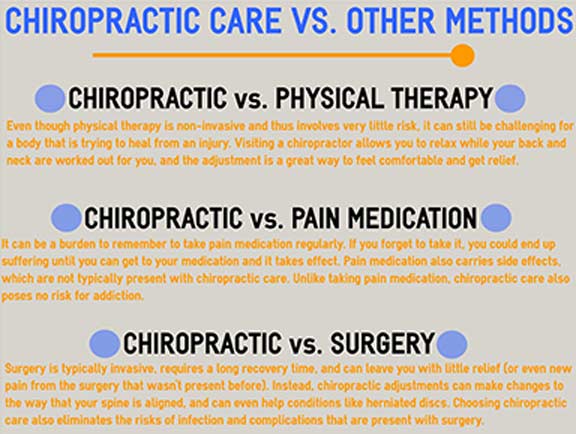The Influence Of Stance On Pain In The Back: Methods For Sustaining Correct Alignment During Daily Activities
The Influence Of Stance On Pain In The Back: Methods For Sustaining Correct Alignment During Daily Activities
Blog Article
Authored By-McKinley Ritchie
Preserving correct posture isn't practically sitting up directly; it has to do with aligning your body in a manner that supports your spinal column and decreases the danger of back pain. The method you rest, stand, and move throughout the day can dramatically impact your back wellness. But just how precisely can you ensure great placement continually, even during active days full of various activities? Allow's dive deeper into the subtle yet impactful modifications you can make to your everyday routine to maintain your back happy and healthy and balanced.
Relevance of Correct Stance
Appropriate pose is essential in keeping a healthy and balanced back and avoiding pain. When you sit or stand with excellent stance, your spine is in placement, minimizing strain on your muscle mass, ligaments, and joints. https://thewest.com.au/news/kalgoorlie-miner/pure-desperation-turned-kalgoorlie-chiropractor-into-a-believer-ng-b882052479z enables the body to distribute weight uniformly, avoiding too much tension on certain areas that can result in pain and pain. By maintaining your spinal column appropriately lined up, you can also enhance your breathing and food digestion, as slouching can press body organs and restrict their functionality.
Moreover, keeping good posture can improve your general look and self-esteem. When you stand tall with your shoulders back and head held high, you emanate self-confidence and appear even more approachable. Good posture can likewise make you really feel much more energized and alert, as it promotes proper blood circulation and permits your muscles to work efficiently.
Integrating proper stance into your everyday routine, whether resting at a workdesk, walking, or working out, is necessary for preventing neck and back pain and advertising total health. Remember, a small change in just how you hold yourself can make a significant difference in how you feel and operate throughout the day.
Common Postural Mistakes
When it comes to preserving good posture, many individuals unconsciously make usual errors that can contribute to pain in the back and discomfort. https://chiropracticinjuryclinics95173.is-blog.com/38543026/a-beginner-s-guide-to-understanding-cervical-spine-makeup-and-its-impact-on-neck-pain of the most prevalent mistakes is slouching or stooping over while resting or standing. This position places extreme strain on the back and can result in muscular tissue discrepancies and discomfort over time.
Another typical mistake is overarching the reduced back, which can flatten the natural curve of the spine and trigger pain. Furthermore, crossing legs while sitting may feel comfortable, however it can produce an imbalance in the hips and hips, leading to postural problems.
Utilizing a cushion that's also soft or as well solid while resting can also impact your placement and add to pain in the back. Lastly, continuously craning your neck to consider displays or adjusting your placement frequently can strain the neck and shoulders. Bearing in mind these common postural mistakes can help you keep far better alignment and lower the risk of pain in the back.
Tips for Correcting Placement
To boost your alignment and reduce neck and back pain, it's important to concentrate on making small adjustments throughout your daily regimen. Begin by being mindful of your position. When sitting, ensure your feet are flat on the flooring, your back is straight, and your shoulders are unwinded. Stay clear of slouching or leaning to one side. Use https://same-day-chiropractor-nea95162.wizzardsblog.com/32072473/uncover-the-tricks-behind-neck-discomfort-and-just-how-comprehending-cervical-back-makeup-can-aid-you-locate-alleviation or cushions to support your reduced back.
When standing, disperse your weight equally on both feet, maintain your knees somewhat curved, and tuck in your pelvis. Engage your core muscles to sustain your spine. Take breaks to extend and walk around if you have an inactive job. Integrate exercises that enhance your core and back muscle mass, such as planks or bridges.
While sleeping, use a pillow that supports the all-natural curve of your neck to preserve correct spinal alignment. Avoid sleeping on your tummy, as it can strain your neck and back. By being mindful of these pointers and making small changes, you can gradually correct your placement and ease pain in the back.
Conclusion
Bear in mind, maintaining good position is essential to preventing pain in the back and advertising back wellness. By being mindful of your placement, distributing weight uniformly, and involving your core muscles, you can minimize pressure on your back and lessen the threat of discomfort and injury. Incorporate ergonomic support, take normal breaks to stretch, and enhance your core and back muscular tissues to preserve correct placement throughout the day. Your back will certainly thank you for it!
